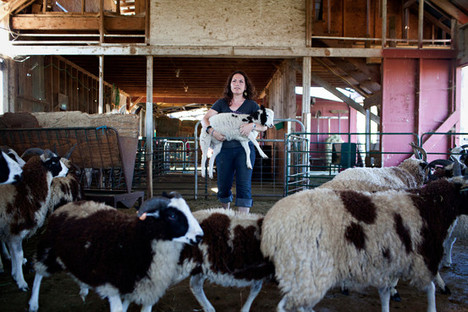 “Grant Stanley, left, and Tadd Wood founded Contemporary Analysis, which uses data to solve sales, marketing, customer retention, employee management and planning problems.” Source of caption and photo: online version of the Omaha World-Herald article quoted and cited below.
“Grant Stanley, left, and Tadd Wood founded Contemporary Analysis, which uses data to solve sales, marketing, customer retention, employee management and planning problems.” Source of caption and photo: online version of the Omaha World-Herald article quoted and cited below.
The entrepreneurs celebrated in the article quoted below are former students of mine. Grant Stanley was in my Economics of Entrepreneurship and Economics of Technology seminars and Tadd Wood was in my Honors Colloquium on Creative Destruction. I wish them well.
(p. 1D) A half-dozen 20-something math, economics and neuroscience whizzes form Contemporary Analysis, an Omaha-based firm that is making predictive analytics available to a wider array of firms faster and for less money.
The team, which has a penchant for roaming around its Old Market office shoeless, is led by Grant Stanley, 23, the company’s chief executive. He founded the firm in March 2008 with Tadd Wood, 23, who is now a senior analyst.
For nearly three years, Contemporary Analysis has built a customer base mostly of companies and businesses with lean budgets, meaning they didn’t have a lot of cash to spend on analytics products. Traditionally, analytics firms lock clients into expensive, long-term contracts.
Not Contemporary Analysis.
Their products are designed to yield results in about a month, and average contracts are about $5,000, Stanley said. The company’s analytics tools use data to solve sales, marketing, customer retention, employee management and planning problems.
. . .
(p. 2D) A . . . report from the IBM Institute for Business Value found that top-performing organizations use analytics five times more than lower performers.
Of the 3,000 executives, managers and analysts polled for the IBM report, those who came from high-performing companies said they used analytics to guide future strategies 45 percent of the time and day-to-day operations 53 percent of the time. By comparison, lower-performing firms used analytics 20 percent when addressing future business matters and 27 percent on a daily basis.
For the full story, see:
Ross Boettcher. “Omaha Whizzes Bring Analytics to More Companies.” Omaha World-Herald (Thursday, July 14, 2011): 1D & 2D.
(Note: ellipses added.)
(Note: the online version of the article has the title “Making analytics affordable.”)
 “Avid knitter Shelby Stofle, gathering wool from sheep in Vacaville Calif., hopes to set up a business making scarves and selling them at craft fairs.” Source of caption and photo: online version of the WSJ article quoted and cited below.
“Avid knitter Shelby Stofle, gathering wool from sheep in Vacaville Calif., hopes to set up a business making scarves and selling them at craft fairs.” Source of caption and photo: online version of the WSJ article quoted and cited below. 


